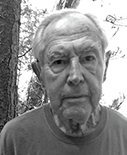
Joseph Schachter
FREE ASSOCIATION
Response to Busch’s Comments on Free Association
Joseph Schachter
Joseph Schachter, M.D., Ph.D., retired, was formerly Pittsburgh Psychoanalytic Center training and supervising analyst, former chair of the Committee for the Evaluation of Research Proposals of IPA and author of five books and more than 60 papers.

Joseph Schachter
Fred Busch’s article [See Free Association, and Analytic Listening TAP 53/2, page 12] reaches back almost three years to my original, brief TAP discussion questioning the relevance and usefulness of the term, “free association,” in its current context and applications. He skips over my response to Joan Lentz about free association in order to assert broadly that “all we need to know can be found in the patient’s use of free association,” while expanding the term to all communications nonverbal and verbal that the observant, listening psychoanalyst attends to daily. [See Joseph Schachter, “Free Association: Is It Still Relevant?” TAP 50/3, page 10; Joan Lentz, “Commentary on Schachter’s Free Association,” TAP 52/1, page 23; Joseph Schachter, “Response to Joan Lentz,” TAP 52/1, page 24]
Michael Holzer & Horst Kächele (2010) argued free association has never really existed, while Neil J. Skolnick (2015) points to the lack of consensus as to what free association actually is. Busch doesn’t mention that Lentz herself, in response to my paper, agreed there was neither a definition of free association, nor a consensus as to what free association actually is. Whatever its original usefulness to Freud and to our understanding of the unconscious, it is a fact that more than 100 years later there is no qualified empirical evidence that introducing the concept of free association into the clinical situation enhances the benefits of psychoanalytic treatment. Interest in free association has waned sharply; during the five years from 2013 to 2018, PEP lists 97 papers about transference; 78 papers about countertransference; but only 17 papers about free association.
I noted in 2018 that the instruction to candidates to introduce free association to the patient is probably enhanced by an identification with their training analyst’s use of free association. Multiple criticisms of the training analyst system have led to suggestions to modify or terminate it, but more 16importantly, candidates should be encouraged to explore different techniques for initiating analytic treatment, selecting those that are best suited to the dyad and to themselves as individuals.